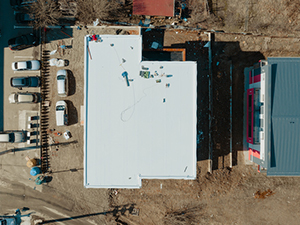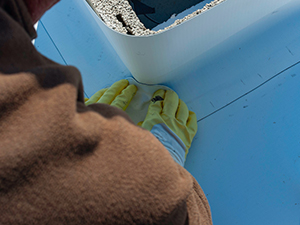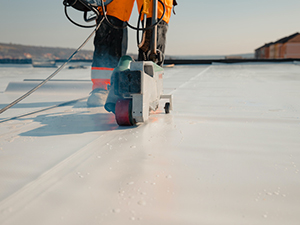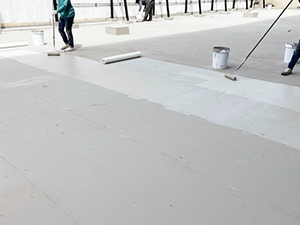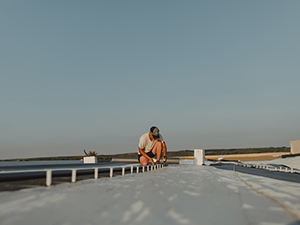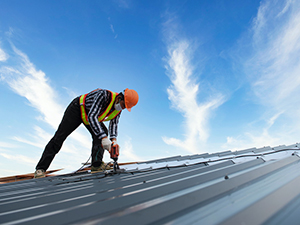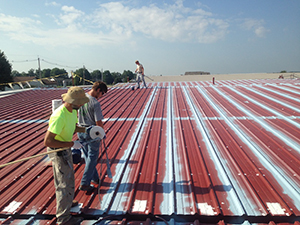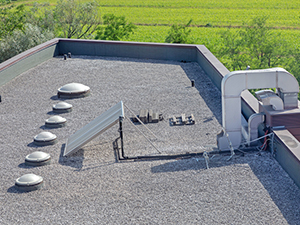
In the world of commercial roofing, efficiency and reliability are everything. In Battle Creek, MI, one of the most trusted solutions among property owners and facility managers is single-ply roofing. At JM Roofing Solutions, we specialize in installing these modern, high-performance systems to protect your building from the elements, minimize long-term costs, and improve energy efficiency.
Whether you are constructing a new building or replacing an aging system, single-ply roofing is a smart investment backed by decades of proven results.
Call JM Roofing Solutions at (269) 361-8305 to schedule expert single-ply roofing services in Battle Creek, MI.
What Makes Single-Ply Roofing Different?
Unlike multi-layer roofing systems, single-ply membranes are installed in a single, seamless layer. This modern approach delivers a watertight, flexible barrier that is ideal for flat or low-slope commercial roofs.
There are several types of single-ply membranes, each with distinct advantages:
TPO (Thermoplastic Polyolefin): Offers high solar reflectivity, making it ideal for reducing cooling loads in summer.
EPDM (Rubber Roofing): Durable and flexible, it performs exceptionally well in cold climates and resists UV exposure.
PVC (Polyvinyl Chloride): Known for its chemical resistance and excellent longevity, PVC is great for food service or manufacturing facilities.
At JM Roofing Solutions, we tailor your roofing solution based on your property’s use, environmental exposure, and long-term goals.
Why Businesses Choose Single-Ply Roofing

Single-ply roofing isn’t just about looks—it’s about long-term performance and protection. Here is why it is a top choice in Michigan:
Weather Adaptability: These membranes are made to expand and contract with temperature swings, perfect for Michigan’s freeze-thaw cycles.
Low Maintenance Requirements: Their seamless nature helps prevent water intrusion and simplifies inspections and repairs.
Energy-Saving Features: Many single-ply membranes have reflective properties that reduce heat absorption and energy costs.
Streamlined Installation: Installation is often faster than traditional built-up systems, meaning less disruption to business operations.
Whether your property sees intense sunshine in summer or snow accumulation in winter, single-ply roofs hold up well and offer excellent ROI over their lifespan.
Single-Ply Roofing Services
We believe every building deserves a roof that is not just functional but engineered to last. That is why we begin every project with a full site assessment to evaluate your existing roof, identify potential challenges, and determine the best course of action.
Our process includes:
- A detailed consultation to understand your priorities and budget
- Removal of old materials or preparation for overlay, depending on roof condition
- Precise installation using manufacturer-approved techniques
- Seam testing, flashing inspection, and a final walkthrough for quality assurance
Our trained crews work efficiently and safely to deliver a roofing system that performs for decades. We also offer long-term maintenance plans to protect your investment well into the future.
As a Battle Creek-based roofing contractor, we know what your roof is up against—from summer storms to icy winters. Our team combines regional experience with technical knowledge to ensure your roof is ready for every season. Whether you are managing a small business, industrial facility, or school building, JM Roofing Solutions is your partner in commercial roofing success.
Call JM Roofing Solution at (269) 361-8305 for single-ply roofing services in Battle Creek, MI.
FAQ
Is single-ply roofing suitable for harsh Michigan winters?
Yes, membranes like EPDM are especially suited to cold climates due to their flexibility and freeze-resistance.
How do I know which membrane type to choose?
We help you decide based on your building’s use, exposure, and maintenance goals. TPO, EPDM, and PVC each serve different needs.
Can single-ply roofing be repaired if damaged?
Absolutely. Most issues like punctures or seam separation can be patched effectively without full replacement.
Does single-ply roofing help with energy efficiency?
Yes. Reflective membranes reduce cooling costs, especially in buildings with large flat roofs exposed to direct sunlight.


